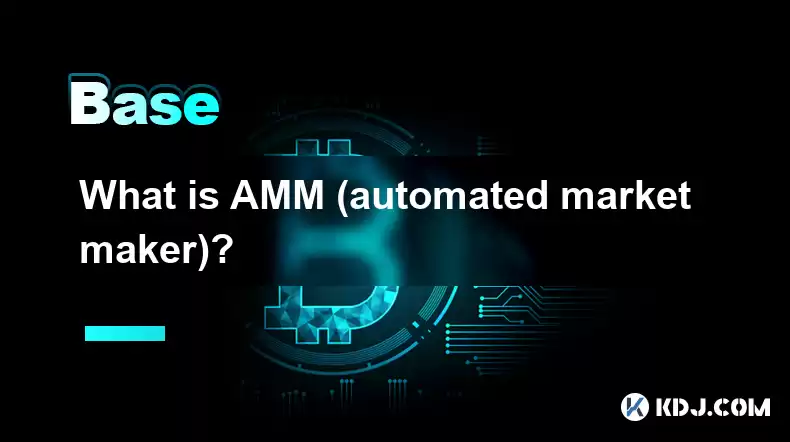-
 Bitcoin
Bitcoin $112400
-1.07% -
 Ethereum
Ethereum $3409
-3.27% -
 XRP
XRP $2.784
-6.60% -
 Tether USDt
Tether USDt $0.9997
-0.03% -
 BNB
BNB $739.3
-2.09% -
 Solana
Solana $158.0
-2.90% -
 USDC
USDC $0.9998
-0.02% -
 TRON
TRON $0.3213
-0.94% -
 Dogecoin
Dogecoin $0.1929
-5.01% -
 Cardano
Cardano $0.6974
-2.82% -
 Hyperliquid
Hyperliquid $36.69
-2.31% -
 Sui
Sui $3.327
-4.80% -
 Stellar
Stellar $0.3672
-5.18% -
 Chainlink
Chainlink $15.65
-3.07% -
 Bitcoin Cash
Bitcoin Cash $525.0
-1.68% -
 Hedera
Hedera $0.2291
-6.00% -
 Avalanche
Avalanche $20.91
-2.96% -
 Ethena USDe
Ethena USDe $1.000
0.00% -
 Toncoin
Toncoin $3.520
-1.12% -
 UNUS SED LEO
UNUS SED LEO $8.968
0.14% -
 Litecoin
Litecoin $105.7
0.26% -
 Shiba Inu
Shiba Inu $0.00001181
-1.79% -
 Polkadot
Polkadot $3.492
-2.08% -
 Uniswap
Uniswap $8.800
-3.10% -
 Dai
Dai $0.9999
-0.01% -
 Monero
Monero $289.9
-3.17% -
 Bitget Token
Bitget Token $4.243
-1.27% -
 Pepe
Pepe $0.00001006
-3.67% -
 Cronos
Cronos $0.1248
-5.68% -
 Aave
Aave $249.7
-2.50%
What is AMM (automated market maker)?
Decentralized exchanges, AMMs like Uniswap & Curve, use algorithms (often constant product) to automatically trade crypto, offering 24/7 access but posing risks like impermanent loss for liquidity providers.
Mar 11, 2025 at 01:10 pm

Key Points:
- AMMs are decentralized exchanges (DEXs) that automatically facilitate trades without relying on an order book.
- They use mathematical formulas, most commonly constant product formulas, to determine asset prices.
- Popular AMMs include Uniswap, Curve, and PancakeSwap, each with unique features and algorithms.
- Liquidity providers (LPs) supply assets to AMM pools, earning trading fees in return.
- Impermanent loss is a risk LPs face, where holding assets individually would have yielded greater returns.
- Various AMM designs exist, each optimizing for specific trading pairs and use cases.
What is AMM (Automated Market Maker)?
Automated Market Makers (AMMs) are a cornerstone of decentralized finance (DeFi), revolutionizing how cryptocurrency trading occurs. Unlike traditional exchanges that utilize order books to match buyers and sellers, AMMs use algorithms to determine asset prices and facilitate trades automatically. This eliminates the need for a central authority, fostering a permissionless and transparent trading environment. The core of an AMM is a liquidity pool, a collection of tokens locked in a smart contract. These pools provide the liquidity necessary for trading to occur.
How do AMMs work?
The most common AMM algorithm is the constant product formula, famously employed by Uniswap. This formula dictates that the product of the quantities of two assets in a pool remains constant. For example, if a pool contains tokens X and Y, then X * Y = k, where k is a constant. When a user trades, the formula ensures that the product k remains constant, thus determining the price. Other formulas exist, such as the constant sum formula and stable swap algorithms, each tailored to specific needs. For instance, stable swap algorithms are designed for trading stablecoins, minimizing slippage.
What are the benefits of using AMMs?
AMMs offer several advantages over traditional order book exchanges. Firstly, they are decentralized and permissionless, meaning anyone can participate without needing to go through KYC/AML processes or rely on a central authority. Secondly, they offer 24/7 availability and instant trades, unlike order book exchanges which rely on order matching. Thirdly, they provide price discovery through algorithmic pricing, removing the need for human intervention. Lastly, they foster innovation by allowing for the creation of new and unique trading mechanisms.
What are the risks associated with AMMs?
Despite the benefits, AMMs also present risks. Impermanent loss is a significant concern for liquidity providers (LPs). This occurs when the price of an asset in a pool changes significantly compared to when it was deposited. Holding the assets individually might have yielded higher returns. The magnitude of impermanent loss depends on the price volatility of the assets in the pool. Additionally, smart contract vulnerabilities can be exploited, leading to the loss of funds. Finally, high slippage can occur, especially in pools with low liquidity.
Who are Liquidity Providers (LPs)?
Liquidity providers are crucial to the functioning of AMMs. They contribute assets to liquidity pools, earning trading fees as a reward. The more liquidity an LP provides, the higher their share of the trading fees. However, they also bear the risk of impermanent loss. LPs typically use automated strategies or carefully select assets to maximize returns while mitigating risks. The fees earned by LPs are usually paid in the same tokens that constitute the liquidity pool, although some protocols offer incentives in other tokens.
What are some popular AMMs?
Several AMMs have gained significant popularity. Uniswap is one of the pioneers, known for its simplicity and widespread adoption. Curve Finance focuses on stablecoin trading, optimizing for low slippage. PancakeSwap is a prominent AMM on the Binance Smart Chain. Each AMM employs different algorithms and features, catering to specific trading needs and user preferences. Sushiswap is another prominent example, known for its governance token and innovative features. The choice of AMM depends on factors such as the desired trading pair, fees, and level of risk tolerance.
How to become a Liquidity Provider (LP)?
Becoming an LP involves several steps. First, choose an AMM platform and identify a suitable liquidity pool. Second, acquire the required assets for the pool. Third, connect your cryptocurrency wallet to the AMM platform. Fourth, deposit the assets into the chosen liquidity pool. Finally, monitor your position and claim your earned trading fees periodically. Remember that becoming an LP carries the risk of impermanent loss, so careful consideration of the asset price volatility is crucial.
- Step 1: Choose an AMM and a liquidity pool.
- Step 2: Acquire the necessary tokens.
- Step 3: Connect your wallet.
- Step 4: Deposit the assets into the pool.
- Step 5: Monitor and claim fees.
What is Impermanent Loss?
Impermanent loss is a risk faced by liquidity providers in AMMs. It arises when the price of assets in a pool changes significantly compared to when they were deposited. If the price change results in a lower total value compared to holding the assets individually, the difference represents the impermanent loss. This loss is "impermanent" because it can be recouped if the prices return to their initial ratio at the time of providing liquidity. However, if the price divergence persists, the loss can become permanent.
What are the different types of AMMs?
Various AMM designs exist, each with its own strengths and weaknesses. Constant Product AMMs, like Uniswap, are the most common. Constant Sum AMMs are suitable for trading assets with a fixed price ratio. StableSwap AMMs, such as Curve, are designed for stablecoin trading, minimizing slippage. Concentrated Liquidity AMMs, such as Uniswap V3, allow LPs to provide liquidity within a specific price range, increasing capital efficiency. Each design is optimized for different trading pairs and use cases.
Frequently Asked Questions:
Q: Are AMMs secure?
A: The security of an AMM depends on the security of its underlying smart contract. While many AMMs have undergone audits, vulnerabilities can still exist. Users should always research the security track record of an AMM before interacting with it.
Q: How are fees earned by LPs calculated?
A: Fees earned by LPs are usually a percentage of the trading volume in the pool. The percentage varies depending on the AMM platform. The LP's share of the fees is proportional to their share of the total liquidity provided to the pool.
Q: What is slippage in AMMs?
A: Slippage refers to the difference between the expected price of a trade and the actual price executed. It's more likely to occur in pools with low liquidity or during periods of high trading volume.
Q: Can I lose more than my initial investment in an AMM?
A: While impermanent loss can reduce returns, it's generally not possible to lose more than your initial investment unless the smart contract is exploited or there are unforeseen issues with the protocol. However, the value of the assets in the pool can fluctuate, potentially impacting your overall profit or loss.
Disclaimer:info@kdj.com
The information provided is not trading advice. kdj.com does not assume any responsibility for any investments made based on the information provided in this article. Cryptocurrencies are highly volatile and it is highly recommended that you invest with caution after thorough research!
If you believe that the content used on this website infringes your copyright, please contact us immediately (info@kdj.com) and we will delete it promptly.
- BlockDAG, SEI, Ethena: Top Crypto Performers Under the Microscope
- 2025-08-03 10:50:16
- Bitcoin Blasts Past $119K: How Institutional Adoption and Macro Shifts Fuel the Fire
- 2025-08-03 10:55:16
- Crypto, Grok, and August: Decoding the Latest Trends and Insights
- 2025-08-03 11:10:16
- Crypto, Phishing, and Your Wallet: A New Yorker's Guide to Staying Safe
- 2025-08-03 10:30:16
- Troller Cat Meme Coin Presale Soars: A New King in the Crypto Jungle?
- 2025-08-03 10:30:16
- Grayscale, Altcoin Trust, and Mid-Cap Mania: What's the Deal?
- 2025-08-03 08:50:16
Related knowledge

What is the difference between CeFi and DeFi?
Jul 22,2025 at 12:28am
Understanding CeFi and DeFiIn the world of cryptocurrency, CeFi (Centralized Finance) and DeFi (Decentralized Finance) represent two distinct financia...

How to qualify for potential crypto airdrops?
Jul 23,2025 at 06:49am
Understanding What Crypto Airdrops AreCrypto airdrops refer to the distribution of free tokens or coins to a large number of wallet addresses, often u...

What is a crypto "airdrop farmer"?
Jul 24,2025 at 10:22pm
Understanding the Role of a Crypto 'Airdrop Farmer'A crypto 'airdrop farmer' refers to an individual who actively participates in cryptocurrency airdr...

What is the difference between a sidechain and a Layer 2?
Jul 20,2025 at 11:35pm
Understanding the Concept of SidechainsA sidechain is a separate blockchain that runs parallel to the main blockchain, typically the mainnet of a cryp...

What is the Inter-Blockchain Communication Protocol (IBC)?
Jul 19,2025 at 10:43am
Understanding the Inter-Blockchain Communication Protocol (IBC)The Inter-Blockchain Communication Protocol (IBC) is a cross-chain communication protoc...

How does sharding improve scalability?
Jul 20,2025 at 01:21am
Understanding Sharding in BlockchainSharding is a database partitioning technique that is increasingly being adopted in blockchain technology to enhan...

What is the difference between CeFi and DeFi?
Jul 22,2025 at 12:28am
Understanding CeFi and DeFiIn the world of cryptocurrency, CeFi (Centralized Finance) and DeFi (Decentralized Finance) represent two distinct financia...

How to qualify for potential crypto airdrops?
Jul 23,2025 at 06:49am
Understanding What Crypto Airdrops AreCrypto airdrops refer to the distribution of free tokens or coins to a large number of wallet addresses, often u...

What is a crypto "airdrop farmer"?
Jul 24,2025 at 10:22pm
Understanding the Role of a Crypto 'Airdrop Farmer'A crypto 'airdrop farmer' refers to an individual who actively participates in cryptocurrency airdr...

What is the difference between a sidechain and a Layer 2?
Jul 20,2025 at 11:35pm
Understanding the Concept of SidechainsA sidechain is a separate blockchain that runs parallel to the main blockchain, typically the mainnet of a cryp...

What is the Inter-Blockchain Communication Protocol (IBC)?
Jul 19,2025 at 10:43am
Understanding the Inter-Blockchain Communication Protocol (IBC)The Inter-Blockchain Communication Protocol (IBC) is a cross-chain communication protoc...

How does sharding improve scalability?
Jul 20,2025 at 01:21am
Understanding Sharding in BlockchainSharding is a database partitioning technique that is increasingly being adopted in blockchain technology to enhan...
See all articles

























































































